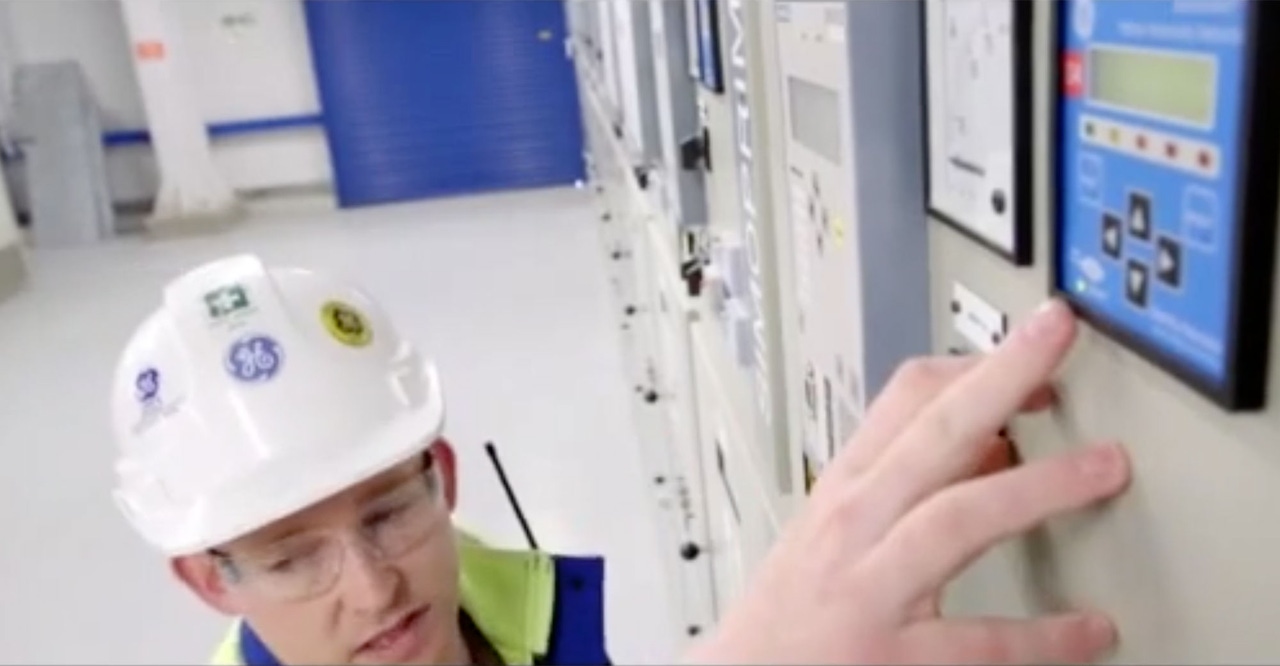Brilliant: How GE is Leading Manufacturing's Digital RevolutionBrilliant: How GE is Leading Manufacturing's Digital Revolution
The once distant and isolated worlds of OT and IT—of physical production and the software that drives it—has been on a steady, inevitable collision course for over a decade. Today, GE is helping them finally merge. The result will be nothing short of a full-scale manufacturing revolution.
June 7, 2016

“The Industrial Internet isn't just a probability anymore,” explained Jamie Miller, Senior Vice President of GE and President and CEO of GE Transportation. “It is really here today.”
This was the subject of Miller's opening keynote at the IndustryWeek Manufacturing & Technology Conference and Expo in Rosemont, Ill. this morning.
In her presentation, “Manufacturing's Data-Driven and Digital Revolution,” Miller pinned the OT/IT merger and the data-rich world of the Industrial Internet as the key driver for some major changes to manufacturing over the next few years.
“The digital industrial is becoming front and center today,” she explained. “It is changing industries in ways that are going to be very profound over the next couple of decades.”
This change, of course, is a special interest at GE.
Brilliant Machines
“While we make very technical, complexly engineered equipment at GE—really heavy metal industrial equipment—we've found that software and digitization are increasingly becoming a more important part of our products,” Miller explained. “This physical/digital convergence is really an OT/IT revolution that we are starting to engage in.”
This is the root of GE's “Brilliant Machines” campaign that has come to define the new generation of smart, sensor-laden, and software-driven machines the company has begun bringing to market over the last few years.
These machines, Miller explained, certainly live up to the “Brilliant” label.
For proof of this, she pointed to the latest locomotive her division launched last year.
“This locomotive has more than 200 onboard sensors and can process over a billion structures per second,” she said. “We're able to take data coming off that locomotive and off the train in real time to understand the track topology and conditions, which we combine with the train weight and length and how the locomotive is running to really optimize fuel performance for customers and optimize how that locomotive performs.”
Brilliant indeed.
But now, Miller explained, GE has taken that focus on brilliance from the equipment it produces to the plants that produce them.
“Our next step has been to take that same vision around our external products and really think differently about how we run our manufacturing shop floors,” she explained.
Brilliant Factory
This process is pushing brilliance into production, creating a new network of Brilliant Factories built on the latest manufacturing technologies, sensor-enabled operations, and an industrial platform capable of leveraging industrial data in new and exciting ways.
Tearing down the remaining walls between OT and IT and rebuilding the entire manufacturing paradigm from the data up would be a daunting challenge for any company. But for GE—with 450 factories spread across 175 countries and employing 300,000 or so workers—it seems downright impossible.
But, as Miller sees it, this is a critical transition for both the company and the industry. If manufacturing is going to stay relevant, someone has to start the change.
“This is a new era of manufacturing,” Miller explained. “We are on a quest to really define and showcase what a GE Brilliant Factory is.”
To do this, GE started slow. The company began with 14 pilot sites to experiment with the concept and eventually selected 75 factories to transform into fully brilliant operations.
Just a year and a half into this process, one plant in particular is already yielding results.
Rebuilding Greenville
GE's Greenville, SC, gas turbine plant was selected for the initial Brilliant Factory pilot program. The team sensor-enabled one of the machines in just one manufacturing cell in order to understand how those machines were doing their work and how the operators were interfacing with them.
In just three months, Millers said, the cell saw a 25% increase in productivity.
After that, she said, the real work began.
“We went through and we took a couple of months and we mapped every single process on the plant,” she explained. “We really looked at the process flow behind the sense and started to think about how we could automate that in a different way through single source of truth, through a common digital thread, through automated consumption of models through machines.”
The results of this experiment were, to put it mildly, impressive.
“We found that over a three-year period we could extract $100,000,000 of productivity off of a quite small investment,” Miller said. “And this is just one plant.”
This model, she said, has spurred a whole new way of thinking about the acceleration of these ideas and has validated the concept of this digital revolution.
This article was originally published in our sister publication IndustryWeek.
About the Author
You May Also Like
.jpg?width=700&auto=webp&quality=80&disable=upscale)
.jpg?width=700&auto=webp&quality=80&disable=upscale)

.jpg?width=300&auto=webp&quality=80&disable=upscale)


